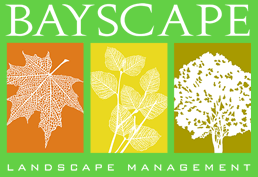Arbortek’s certified arborists not only work here in the South Bay are, but live here as well. They see and treat numerous native tree insects day in, and day out. Here are a few common tree insects you can watch out for yourself. If you see these little critters, it’s time to call Arbortek Trees.
Aphids
Aphids are fairly small (smaller than most ants), somewhat pear-shaped, and come in a variety of colors. They are most commonly green, but some are white, brown, black, orange, green, or red while others are woolly, spotted or bull-legged.
Aphids feed on tree or other plant sap by sucking it out with their straw-like mouths. They often bunch up in clusters, feeding together on the underside of leaves, around stem joints, or on new shoots and flower buds.
They feed off deciduous trees’ leaves and evergreens and cluster in large colonies to attack new growth.
Early season aphids cause leaf curling and new growth distortion similar to broadleaf weed herbicide damage. If there is a large aphid colony, twig dieback and stunting may occur.
Prevention, especially the biological variety, is best done in late winter or early spring. However, if you missed that window, treatment can still be effectively applied. There are a number of pesticides that can tree aphids – head over to our blog Honeydew and You: How to Treat Tree Aphids for more detail.
If it’s too late and your biological measures were missed (or didn’t work effectively) Arbortek Trees regularly provides safe and effective pesticide treatments for trees and garden plants. Contact us for an assessment today.
California Oakworm
These California caterpillar natives love to munch on oak trees. Damage is very common on the coast live oak and most often seen in the San Francisco Bay area.

During the fall, females lay eggs that hatch and overwinter into pupae late Spring. Overwintering typically does not occur on deciduous oaks, which lose their leaves during autumn. The Oakworm pupae emerge mid-summer as moths – you may see them flying around trees.
The young larvae skeletonize the leaves while the more mature larvae eat the entire leaf.
Inspect your trees regularly for oakworms during the active seasons. Arbortek can recommend the proper treatment option for your landscape. We also recommend fertilization of trees showing stress from defoliation.
If you are concerned about your oak trees, contact us for a consultation and learn how to keep your oak trees healthy and bug-free.
Lace Bugs
Lace bugs attack deciduous plants and evergreens. Infested leaves will present whitish flecked damage called stippling (similar to a “bleached” look). Large populations cause premature leaf drop and weaken plants by removing nutrients from their leaves.
Look for blackish, shiny droplets of lace bug excrement on the bottom of the leaf to pinpoint lace bug activity. A grouping of young lace bugs looks like a dark smudge on the leaf.
Their favorite hosts include deciduous plants (hawthorn, oak, pyracantha, quince, and sycamore) and evergreen plants (azalea, mountain-laurel, and rhododendron).

Monitor leaves in late May at three-to-four-week intervals. An insecticide application may be necessary from late May through mid-August. When planting a tree, choose a cool and shady site where naturally occurring fungal diseases will attack lace bugs and reduce their population.
If lace bugs are negatively affecting your landscape, contact us to get an inspection.
